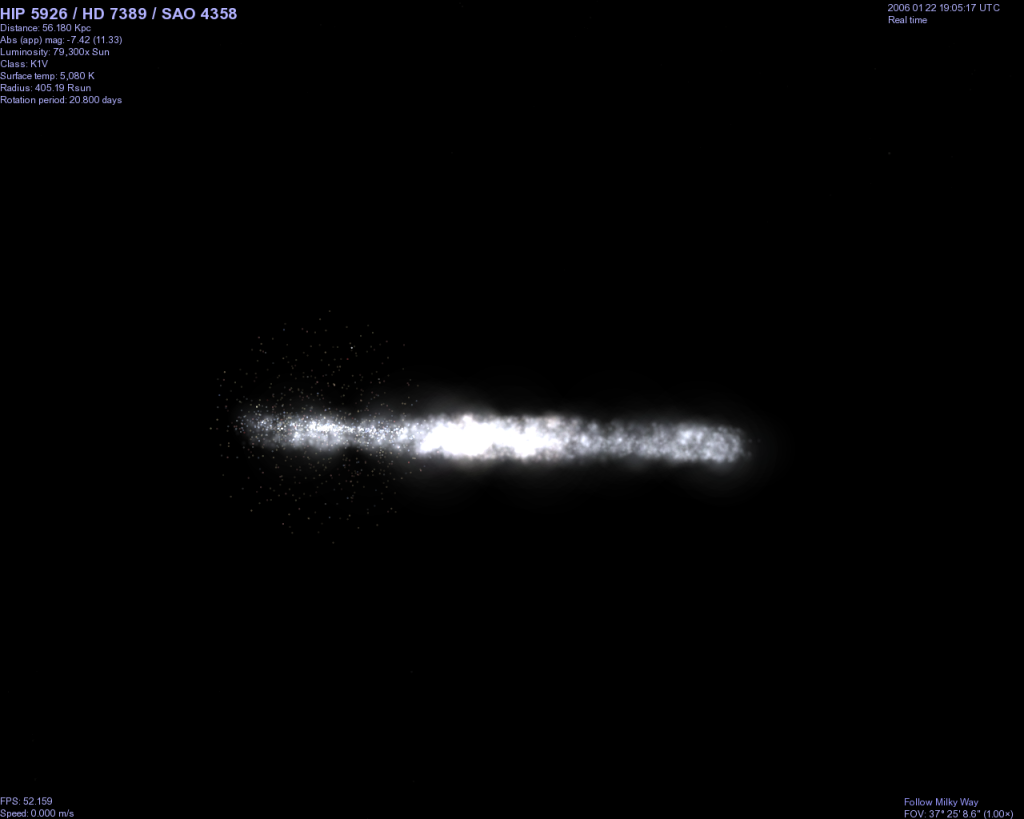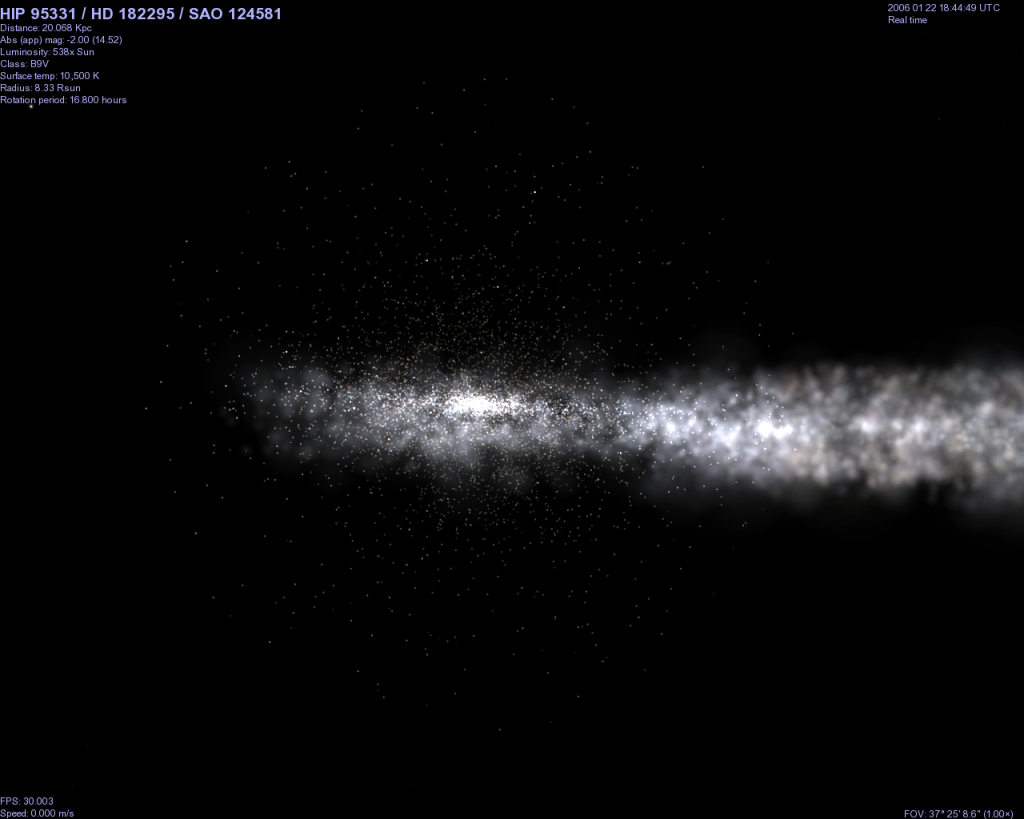

Now, something to me is not right here. Either the stars are in the wrong position, the Milky Way galaxy is the wrong size, or this is actually how it is in real life, and I just don't know it.


GlobeMaker wrote:Yes. Stars can be cast out of galaxies. A small star could be accelerated by close encounters with several large stars. The small star could have enough speed to get some distance away from the galaxy. I never calculated how many stars have a known probability to do that, but if we count our lucky stars, it may be less than zero. Analogies can be made with gas atoms leaving a planet's atmosphere, or the slingshot effect
gravity boost that satellites get from big planets. A lucky star could follow a bigger star to boost its speed. Then it could follow another star for more boost. If enough of these chance encounters go the right way, a star could be flung into the intergalactic void."